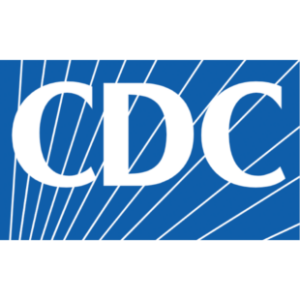Accident investigations improve safety, Part 2
In part one of this series, we discussed accident investigations and the critical role they play in safety management and improving safety programs. Continuing the discussion, we must think about the way we approach accident investigations and the strategies we use.
An accident investigation is not an exercise in placing blame or finding someone at fault. It is a fact-finding mission. As a supervisor, the way that person approaches an accident investigation will set the stage for the flow of the investigation itself as well as the outcome.
I believe that the accident investigation begins with the completion of some version of an employee injury form. My popularity may crash, but I truly believe that the employee injury report should be completed by the supervisor of the injured staff member, not by the injured employee.
When I do a safety audit of a long-term care facility and its injury reports, it is common to find the entire report filled out by the injured employee. And, as a result, it is equally common to find reports that paint a picture of the employee as the poor, innocent victim and the facility as the big, bad wolf that cares nothing about employee safety. Now imagine those reports are to be reviewed by an attorney or by a judge in workers’ compensation hearing.
Again, here goes my popularity down the drain: The supervisor who hands an employee injury report to the injured employee and says “fill this out" is either an untrained supervisor or a lazy supervisor! If you want to hand the form to the employee to complete the personal information section (name, date of hire, department assigned to position, etc.), that is fine. Beyond that, however, the report must be seen as a management tool and must be completed by properly trained supervisors who ask the right questions and properly complete the documentation.
When completing an accident investigation, the supervisor must first review any applicable policies and procedures, job descriptions, job safety analysis and any other available information that gives him or her a clear understanding of the employee’s responsibilities and the specifics of the task being performed when the injury occurred. If equipment is involved, then preventive maintenance records as well as any records of repair should be reviewed in advance.
Time is of the essence. Conduct the accident investigation as soon as possible after the actual event, when it is fresh on everybody’s mind, when critical details will be remembered and when stories have not had a chance to be fabricated and/or embellished. The supervisor should gather as much information as possible from the injured employee, co-workers, witnesses and anyone else with relevant information or knowledge of the actual event or circumstances leading up to or contributing to the event.
CONDUCT AN EFFECTIVE INTERVIEW
The supervisor needs to interview the involved employee soon after the incident. This is a critical part of the investigation, and I want to emphasize that this is a fact-finding mission and not a blame-placing mission. It is important to gather true and complete answers if this information will be used to improve the safety management program.
Part of a successful investigation is the ability to ask questions the right way. Always ask open-ended questions; that is, questions that elicit an explanation from the injured employee rather than simple yes or no answers. For example, which question/request would provide better information for your investigation?
- Were you wearing protective equipment?
- Explain what protective equipment you are wearing and how you’re wearing it.
As you can see, the first question is going to result in a simple yes or no answer followed by the dreaded “pregnant pause.” The second solicitation of information, while implying an assumption that personal protective equipment was being worn, actually puts responsibility back on the employee to not only confirm wearing the protective equipment but also to explain how it was being worn. This not only confirms for the supervisor that the equipment was being used but also gives a clear indication if the employee understands the proper way to wear and use the personal protective equipment.
It is also important to separate fact from opinion. Although the employee’s opinion may be important, the injury report is not the place to share opinions. The supervisor always should make sure that the information in the injury report is a factual representation of the incident, free from biased opinions.
FIND THE ROOT CAUSE
Determining the root cause of the incident will often allow us to identify ways of preventing recurrence in a much more expedient manner. Often, when conducting an accident investigation, we become so focused on cause that we forget to look beyond the obvious. For example, some of the more basic causes that we commonly see identified include unguarded machines, broken tools, ignored hazards, rushing through heavy work volume, horseplay
Unfortunately, if we had dug a little deeper, the real underlying (root) causes may have been identified, such as:
- Inadequate training,
- Poor orientation process,
- Little or no employee accountability,
- Poor preventive maintenance plan, and
- No enforcement or disciplinary action plan.
Conducting a thorough and comprehensive accident investigation is neither convenient nor quick. It takes time, focused energy and a willingness to keep digging until all of the questions are answered and all of the answers are clear.
In the end, several gains will be recognized as a result of a complete and thorough investigation such as an increase in productivity because of fewer accidents and interruptions and improved operational and safety procedures. Other gains include a heightened awareness of the organizational commitment to a safe workplace along with improved financial performance
Stay safe and stay in touch.

Steve Wilder, CHSP, STS, is president and chief operating officer of Sorensen, Wilder & Associates (SWA), a healthcare safety and security consulting group based in Bourbonnais, Ill. SWA performs workplace safety compliance audits and security vulnerability assessments in all types of healthcare facilities. Wilder can be reached at (800) 568-2931 or swilder@swa4safety.com.
Related Articles
Topics: Leadership , Risk Management , Staffing











